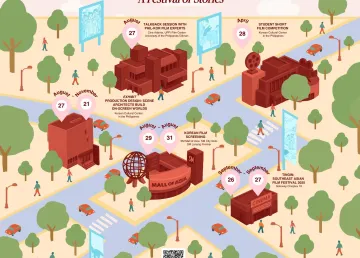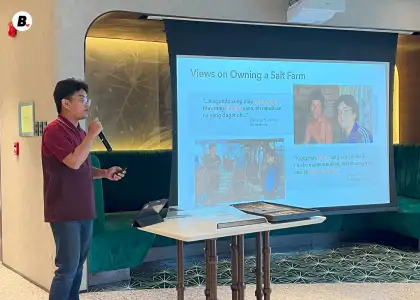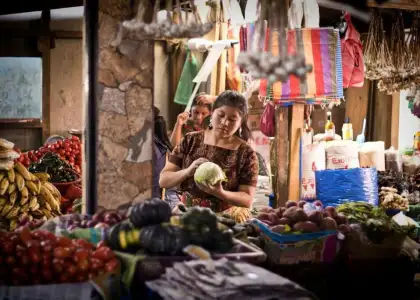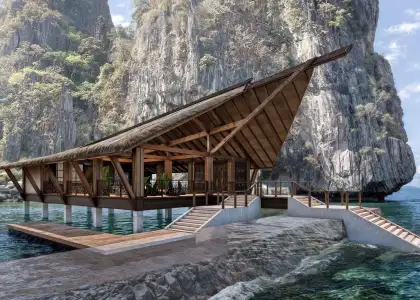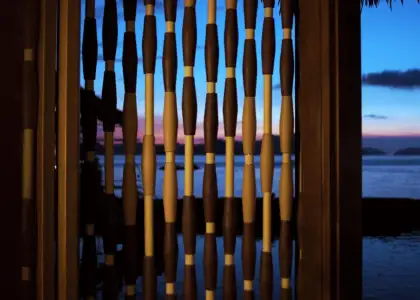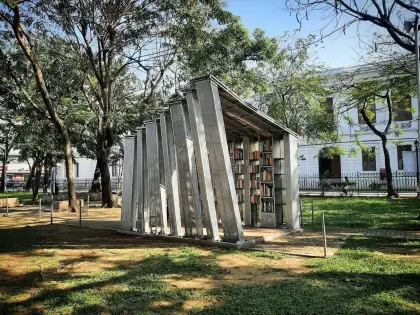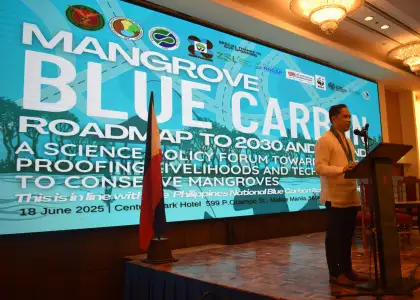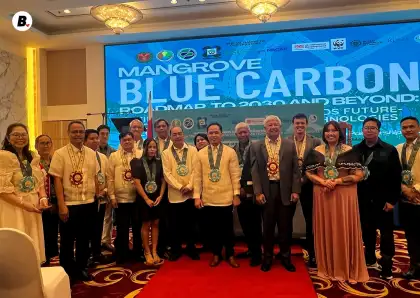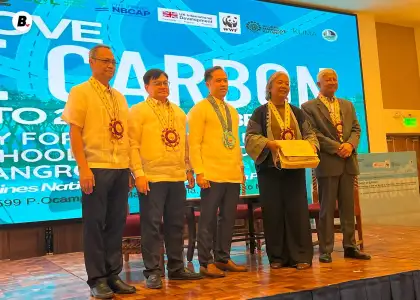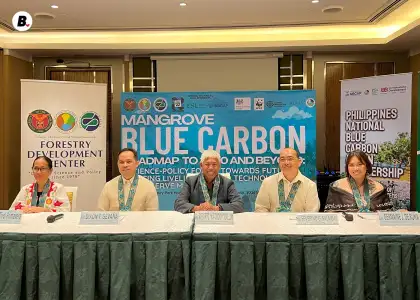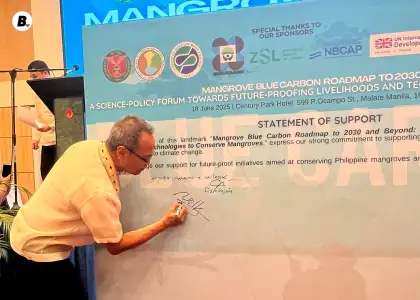Meet the West Visayan Big 5: Spotted Deer, Warty Pigs, Hornbills, and Doves
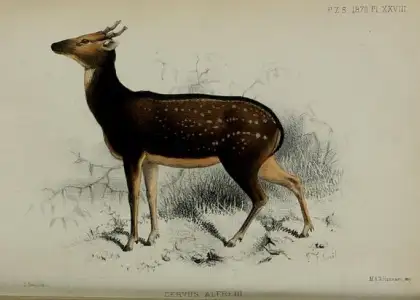
The mythical qualities of Visayan wildlife are apparent, even today. If you’ve ever found yourself walking through these islands, you’ll experience magic in the warble of unfamiliar birdsong. You’ll see endemic trees that stretch and span to the sky. If you are lucky, you may even spot one of the West Visayan Big 5.
No, these aren’t universities or celebrities; they are in fact, something much more important. They are a group of species endemic to the West Visayan Faunal Region. Circling between the islands of Negros, Panay, Masbate, Guimaras, Ticao, and Cebu, the West Visayan Big 5 comprise the Visayan spotted deer, the Visayan warty pig, the Visayan hornbill, the Rufous-headed hornbill, and the Negros bleeding heart dove.
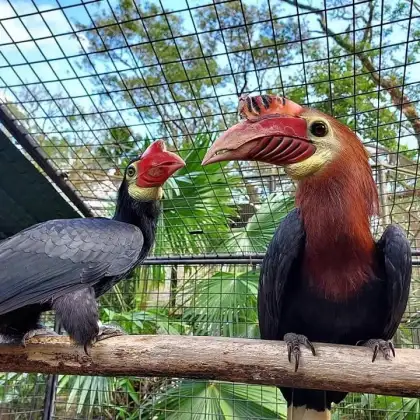
The importance of the West Visayan Big 5 cannot be overstated as Emilio Tan, Administrative Officer of the Talarak Foundation, shared: “By protecting each of these species, we are able to protect an entire forest.”
The native hornbills serve as seed dispersers, the doves as essential prey species (and seed dispersers too), and the deer and the pigs as environmental engineers. They shape a huge part of the ecosystem and are vital for its overall health.
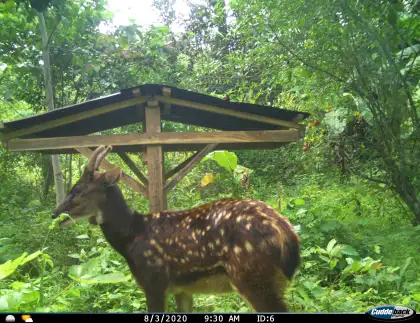
The Talarak Foundation, for its own part, has been breeding and releasing these endangered animals into the 300-hectare Bayawan Nature Reserve. In 2020, they had successfully released 32 Visayan spotted deer and 22 Visayan warty pigs into the area; by 2023, the number of these animals doubled, bringing up their total to 55 deer and over 60 pigs.
“[Our efforts] show how easily [these animals] could bounce back if we work in harmony with them and don’t persecute them in any way,” Emilio said.
In Bayawan, researchers are also able to catch a firsthand glimpse of how the animals are reversing the ecosystem back into healthy equilibrium. “The deer [and warty pigs] make trails and pathways. They trim down shrubs or other plants so other [flora] can thrive. It’s a very interesting thing to see them shaping their habitat,” added Emilio.
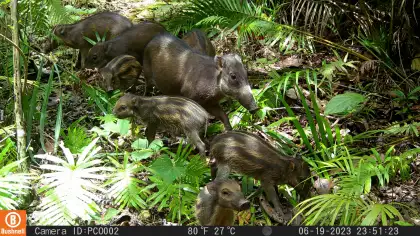
Sadly, not all the islands in West Visayas can boast of housing these creatures anymore. Due to human activity, these animals have been pushed out of the islands they originally called home. While they had been plentiful in the 80s – with elder residents claiming to have seen them even around the coast – today, they are a rare sight.
“A lot of people hunt the Visayan spotted deer, they see them as game or as a hunting trophy,” said Emilio. “Meanwhile, other people don’t even know that we have deer on [Negros] island. But the thing is, that’s understandable because right now, we only know of two sites on the whole island where there’s still wild deer. That’s a very small area for such a huge island.”
The warty pigs, meanwhile, take on the brunt of consternation from local farmers. “The comment [we] normally [hear about the warty pig] is that they’re really tasty [to eat] or that they’re a pest,” he added. “The farmers we talk to are always in conflict with them because the pigs will come down the hill and eat their crops. So we’re figuring out a way to stop this with a deterrent system but that’s still an ongoing project.”
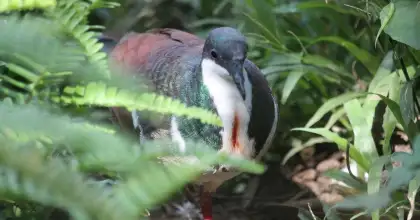
This is why Emilio is among the strongest advocates for individuals to support foundations such as Talarak. Through them, animals are given the best captive management care possible. They are bred and released into the wild and given the chance to benefit from optimal diets, a suitable space to roam, and socialization with other animals.
Thankfully, the Talarak Foundation has also found allies in other organizations. Among these are well-known zoos and conservation partners across the world including the Toledo Zoo, Mandai Wildlife Reserves, the Disney Conservation Fund, and Zoo Heidelberg. Most of these are partnerships that help with research and documentation of the animals.
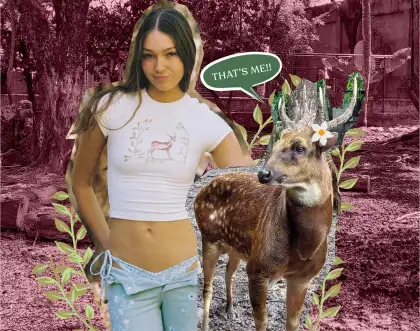
As the Talarak Foundation aims to support the local communities, it’s become important for them to find other types of support as well. Fortunately brands such as Tagpi-Tagpi and Blackbough Swim have come to help out. For example, Blackbough has created a special collection named “Bambi’s Ballet” that features prints made by artist Inya de Vera. Her illustrations pay homage to the Visayan spotted deer; overall the brand's fundraising efforts has managed to successfully raise US$1,000 that will go towards the maintenance of an enclosure for an entire family of Philippine spotted deer.
“[With the help of our partners], we plan to do livelihood activities to support communities surrounding our nature reserve. We want to uplift their lives and alleviate the conflicts [between them and the animals],” shared Emilio. “We fully believe that the local Bayawanons can handle the site on their own if we can make it sustainable. Because of this, we want to convert the site into an educational center where people can have nature camps and learn about wildlife.”

The Talarak Foundation is also proud to showcase their educational efforts, reaching out to locals and students with fascinating information about these unique animals. They even get to meet them on occasion. In fact, one of their ambassador animals is a warty pig named Anakin who’s somehow become too comfortable around humans.
“He’s too smart for his own good,” shared Emilio with a laugh. “During lunch, he would station himself behind our kitchen where we have a compost bin. He was, in effect, teaching other pigs to become domesticated [and wait for food]. We didn’t want [the other pigs] learning that kind of behavior because these animals have to perform their function in the ecosystem. [Anikin] will also come up to people and lay down next to them because he wants a belly rub. It’s really cute but really bad behavior, so instead of releasing him into the wild, we’ve made him an ambassador animal instead.”
In the future, the Talarak Foundation aims to expand their conservation area even more. As the Bayawan Nature Reserve finds itself in the heart of the city, the organization is aware that it’s important for the animals to populate beyond the city limits. “Our goal in the far future is to expand our area and connect it, to create corridors that allow the animals to move into this huge biodiversity area in Negros,” shared Emilio. “But that’s our big goal that will take some time.” Through our support of Talarak Foundation – and those that support them – we can once again hope to see these beautiful animals not just around Negros, but around the entirety of West Visayas yet again.
Get the latest curated content with The Beat Asia's newsletters. Sign up now for a weekly dose of the best stories, events, and deals delivered straight to your inbox. Don't miss out! Click here to subscribe.



